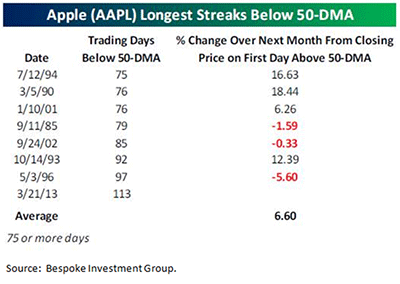Voyager
by Jeffrey Saut, Chief Investment Strategist, Raymond James
March 25, 2013
“Voyager 1, launched in 1977 to explore the outer planets, has passed into a new region on its way out of the solar system, scientists said on Wednesday. The spacecraft, now more than 11 billion miles away, detected two distinct and related changes in its environment on August 25, 2012, scientists write in a paper to be published in Geophysical Research Letters and emailed to Reuters on Wednesday. The probe detected dramatic changes in the levels of two types of radiation, one that stays inside the solar system, the other which comes from interstellar space.”
. . . Irene Klotz, Reuters News
According to Wikipedia, the Voyager 1 spacecraft is a 1,590 pound space probe launched by NASA on September 5, 1977 to study our solar system and interstellar space. Operating for more than 35 years, the spacecraft receives commands and transmits data back to the Deep Space Network. At a distance of more than 11 billion miles (123.48 astronomical units) it is the farthest human-made object from Earth and is traveling in a previously unknown region of space. Similarly, the D-J Industrial Average (INDU/14512.03) is traveling in a previously unknown region of space as it boldly goes where no man has been before. Indeed, since traversing above its all-time high of 14164.53, reached on October 9, 2007, the senior index has been notching new highs over the past few weeks. Likewise the D-J Transportation Average (TRAN/6179.26) has been doing the same, until last week when it surrendered 1.49% while the Industrials traded at the “flat line.” The Transport’s weakness is troubling since I have viewed it as the leading index over the past few months. Also troubling is that the 14-week Stochastic Oscillator is becoming negatively configured. Recall that the Stochastic Oscillator does not follow price or volume, but rather the speed and momentum of price changes. Typically, the momentum changes direction before prices do. Accordingly, divergences in the Stochastic Oscillator can be used to foreshadow short-term price reversals, and last week there was a bearish divergence.
In a few of last week’s missives I suggested that we were entering a timing band that suggested at best a consolidation and at worst a pullback. So far, it has just been a consolidation. If, however, this week’s busy news calendar sparks more of a pullback, one of the key levels to watch is 1536 on the S&P 500 (SPX/1556.89). A close below that level would imply more downside pressure into the 1520 – 1530 zone and failing that into the 1490 – 1510 level. At this point that is about the maximum downside I can see unless something changes dramatically. Manifestly, there has been no deterioration in the Buying Power Index, which is at its highest level since the November 16, 2012 low of 1343.35 (read: strong demand). Meanwhile, the Selling Pressure Index recorded a new reaction low last week and remains in a downtrend that began in November of 2011. And, that trend continues this morning with the preopening S&P 500 futures up another 8 points as that index tries to do what most of the other indices have already done – make new all-time highs. This morning’s strength comes on news of a deal out of Cyprus to close one of its banks, potentially shutting the door on another Euroquake event.
In last Monday’s strategy report I offered some portfolio tweaks in an attempt to rebalance select sectors. One idea was to trim back on the financial stocks, which have had a nice run year-to-date with a gain of 10.80%. With some of those freed-up funds I was inclined to increase exposure to Technology. Surprisingly, Technology is currently being valued more cheaply than the Utility Sector, implying that utility stocks are going to show more growth going forward than Tech. I do not believe it and consequently suggested selling partial positions in the Financials and buying select Technology. That swap was looking pretty good until Oracle (ORCL/$31.98/Outperform) coughed up a hairball, casting a cloud over the entire tech sector. For the week Financials gave up 1.46% while Technology was down 0.34%. Interestingly, the Consumer Staples sector was the biggest winner of the week with a 2.08% gain and Materials the biggest loser at -1.96%. For a while I have opined that the Industrial sector is the new playing field for the Consumer Staples investor, the Consumer Staples are the new vehicle for Utility investors, and Utilities are the new arena for the fixed income investor. Nevertheless, despite Oracle’s softer than expected sales release, I continue to like the idea of increasing exposure to Technology using either the exchange-traded product of your choice or via individual stocks. Speaking to technology, Apple (AAPL/$461.81/Outperform) finally closed above its 50-day moving average (DMA) for the first time in 113 sessions. As the must have Bespoke Investment Group writes:
“Sentiment towards AAPL certainly seems to have shifted positive this week. It seems as though the hype leading up to the launch of the Blackberry 10 and the Samsung Galaxy S4 took a lot of the wind out of AAPL’s sails. With both of those launches in the rearview mirror, though, investors seem to be rotating back into the stock.” (For the historic stock performance of Apple over the next month after a closing price on the first day above its 50-DMA, see the table below.)
While I continue to think investors need some exposure to emerging and frontier stock markets, since the tribulations of the “fiscal cliff” passed, U.S. equity markets have been the place to be. That fact has proven to be a conundrum to most foreign investors. Three stocks from the Raymond James research universe of stocks that derive 100% of their revenues domestically, and have favorable ratings from our analysts, include: Express Scripts (ESRX/$57.93/Outperform); Marathon Petroleum (MPC/$90.91/Outperform); and Regions Financial (RF/$8.21/Strong Buy).
The call for this week: The buying stampede that began on 12/31/12 is still in force and is currently at session 57 (today). That makes this the longest stampede I have ever experienced. While we are certainly due for a pause/pullback, any such action should prove to be short-lived and shallow, providing there is not some kind of “black swan” event that precipitates it. If investors want to be bullish on the U.S. economy, but are worried about the extended rally in the stocks, they might consider “long” positions in the U.S. dollar. I have been bullish on the dollar since the fourth quarter of 2012. Last week the 50-DMA crossed above the 200-DMA of the U.S. Dollar Index, suggesting there is more dollar strength to come. One way to play a stronger dollar is using the PowerShares DB U.S. Dollar Index Up (UUP/$22.42). A hedge to this bullish dollar position would be some kind of long position in gold, which appears to be in a downside capitulation phase that might just accelerate on the Cyprus bank closing over the weekend.

Click here to enlarge












